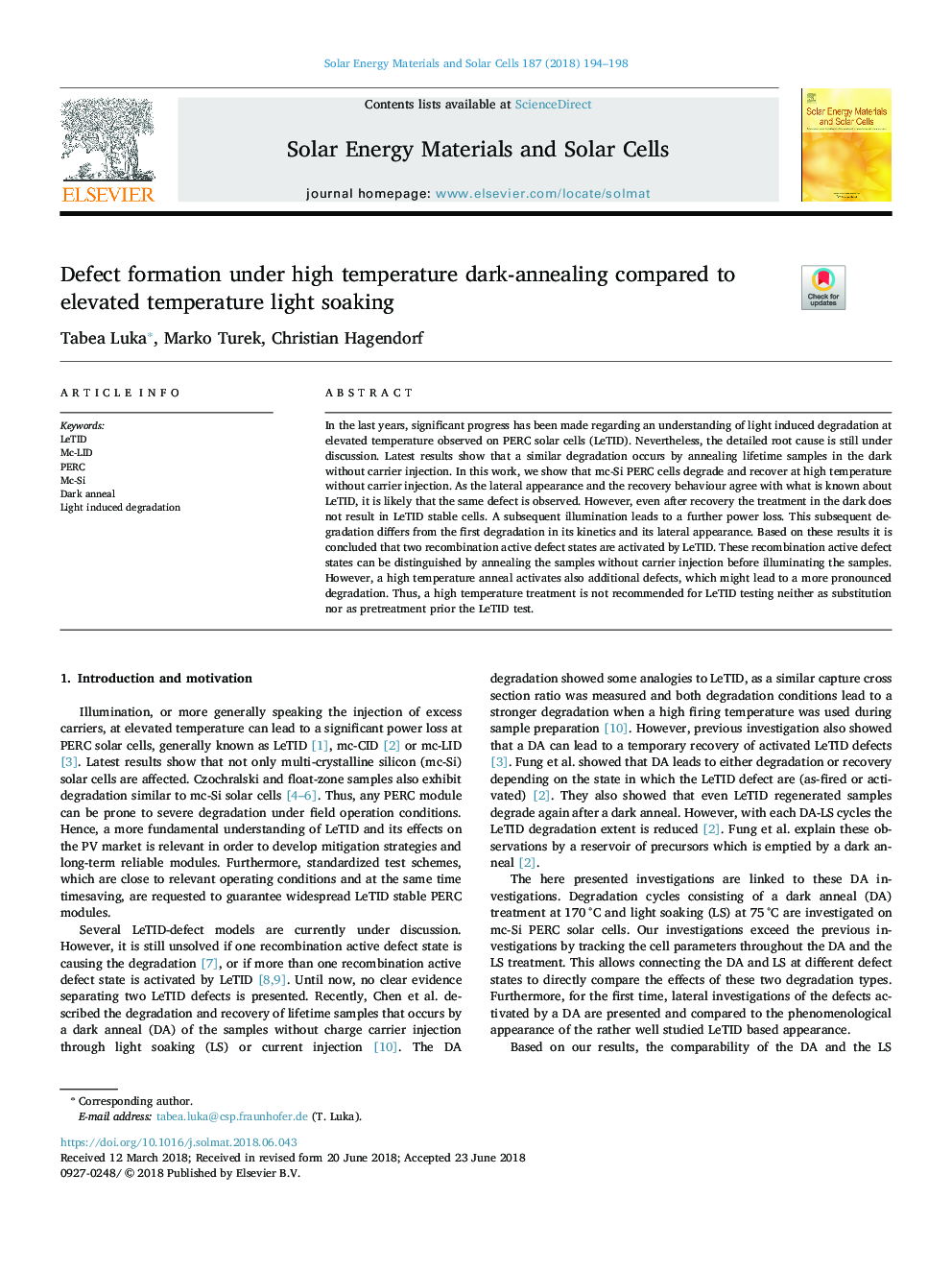| Article ID | Journal | Published Year | Pages | File Type |
|---|---|---|---|---|
| 6533789 | Solar Energy Materials and Solar Cells | 2018 | 5 Pages |
Abstract
In the last years, significant progress has been made regarding an understanding of light induced degradation at elevated temperature observed on PERC solar cells (LeTID). Nevertheless, the detailed root cause is still under discussion. Latest results show that a similar degradation occurs by annealing lifetime samples in the dark without carrier injection. In this work, we show that mc-Si PERC cells degrade and recover at high temperature without carrier injection. As the lateral appearance and the recovery behaviour agree with what is known about LeTID, it is likely that the same defect is observed. However, even after recovery the treatment in the dark does not result in LeTID stable cells. A subsequent illumination leads to a further power loss. This subsequent degradation differs from the first degradation in its kinetics and its lateral appearance. Based on these results it is concluded that two recombination active defect states are activated by LeTID. These recombination active defect states can be distinguished by annealing the samples without carrier injection before illuminating the samples. However, a high temperature anneal activates also additional defects, which might lead to a more pronounced degradation. Thus, a high temperature treatment is not recommended for LeTID testing neither as substitution nor as pretreatment prior the LeTID test.
Related Topics
Physical Sciences and Engineering
Chemical Engineering
Catalysis
Authors
Tabea Luka, Marko Turek, Christian Hagendorf,
